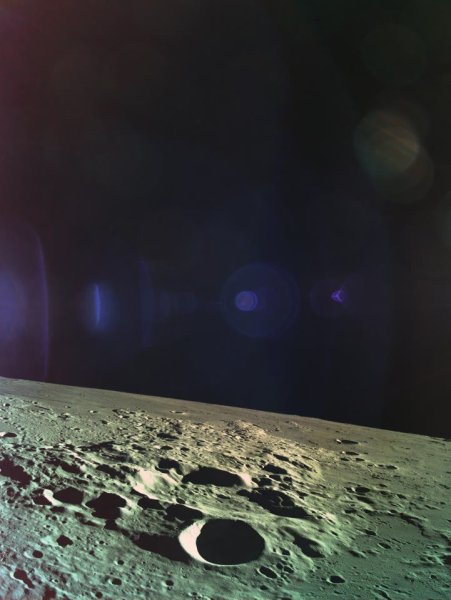Some space arts related items I’ve recently come across:
** Winners announced for the OK Go Sandbox‘s Art In Space Contest. As described in the March posting about the contest, the band OK Go, which had made a music video in microgravity, wanted to encourage young people between ages 11-18 to do their own art projects in space and they came up with the idea of a contest:
The Art in Space contest invited students to dream up their own cool experiments to send into suborbital space onboard the [Blue Origin] New Shepard spacecraft.
The two winning teams will work with engineers, artists and educators from the Playful Learning Lab, in consultation with Blue Origin and OK Go, on flight ready versions of their ideas.
The responses of the winners when informed of their selection were captured in this video:
One of the two winning teams is based in New York and includes students Alexandra Slabakis (16), Grace Clark (16), and Annabelle Clark (12). The team’s project is called “Dark Origin” and will use gravity and magnetism to simulate the origin of planet Earth.
The second winning team is based in Utah and includes students Cameron Trueblood (11), Blake Hullinger (12), and Kellen Hullinger(15). Their design proposes using environmental data taken during the space craft’s flight to create sounds and visual art.
“We were thrilled with the entries to the Art In Space contest – picking winners was so hard!” said OK Go lead singer Damian Kulash. “The submissions were all so imaginative, and really exemplified the type of thinking and creativity that OK Go is always striving for in our own work. The kids, especially our winners, clearly understand the truth that so many adults have lost along the way: there are no borders separating art and science — they’re the same thing. It all comes from curiosity and experimentation, and creativity is really just about exercising those skills.”
*** You can also send your artwork to space and back via a New Shepard. Blue Origin’s public participation initiative, Club for the Future, welcomes your art on the back of postcard
By the way – there is another way to send your dreams, visions for the future or art to space on an upcoming #NewShepard launch. On https://t.co/Xz0KVH0MIq you will find directions to send us a postcard that we will fly to space, and mail back to you @ClubForFuture pic.twitter.com/w78cmg5q0A
— Blue Origin (@blueorigin) June 25, 2019
Draw or write your vision of millions of people living and working in space on the blank side of a self-addressed, stamped postcard, and send it to us. We’ll pack the first 10,000 postcards received before July 20, 2019 inside the Crew Capsule on an upcoming New Shepard flight. Your idea will launch into space! Once New Shepard returns to Earth, we’ll send your postcard back to you, officially stamped “flown to space.”
To participate, see the step-by-step guide on the Club for Space homepage or download these instructions (pdf).
** Amazon Prime’s “Artist Depiction” documentary profiles 3 space artists: Don Davis, Charles Lindsay, and Rick Guidice discuss their

** Check out the terrific images created artist Sam Taylor who is inspired by the SpaceX Starships now in development in Florida and Texas:

** A CNN article on the space arts covers astronaut and dancer Mae Jemison’s views on the importance of both the arts and STEM in a well-rounded education, the paintings of the Moon by the late Apollo astronaut Alan Bean, astronaut Nicole Stott’s use of art to teach kids about space, and the role of effective illustrations in explaining complex space science and astrophysics phenomena: Art and space: ‘A quest never to end’ – CNN
For the past 15 years at Caltech, the artistic duo of Robert Hurt and Tim Pyle has been creating illustrations of how gravitational waves, myriad exoplanets and even the top of the Milky Way might look if we could see them for ourselves. The images look so realistic that the captions have to remind people that they’re artistic renderings.

====







